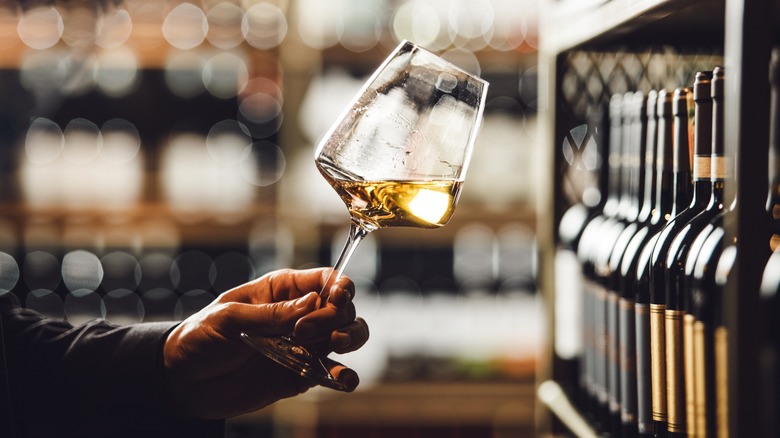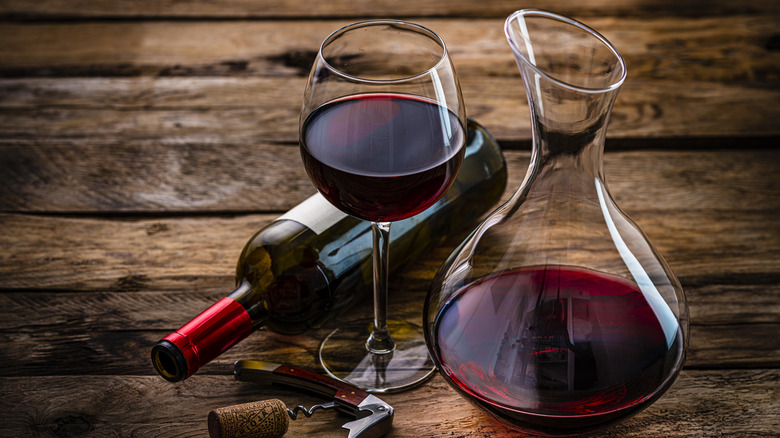How To Know You're Over-Aerating Your Wine
If you're looking to make the most of your bottle of Malbec or Merlot, aerating it is the way to go. Exposing the wine to air can help bring out the wine's flavor and aroma while helping to eliminate or mitigate any harsh notes that may otherwise overpower it.
One of the easiest ways to expose the wine to air is to swirl it. However, sommelier Doreen Winkler, founder of Orange Glou, the world's only wine store and subscription service dedicated to orange wines, warns against over-aerating. "The point of swirling wine is to aerate it, which will open the wine up and get the aromas to come out. It is possible to over-aerate wine — too much swirling can oxidize the wine and affect the flavor, and it can make the wine too warm," Winkler told Food Republic.
If you've ever been disappointed by a vino that's turned vinegary, you're already familiar with wine that's overly aerated — coming into contact with air for too long can cause the wine to go bad. However, in less extreme cases, you may find that over-aerated wine simply loses its oomph. Instead of delivering complex fruity, herbaceous, floral, or leathery notes, it may just fall flat. Worse, if it gets warm, it can become bitter and the taste of alcohol may overshadow the wine's other flavors. That said, Winkler advised against not swirling at all: "Not enough swirling and you won't get much of the aromas and flavors."
More ways to aerate wine
While moderate amounts of swirling can help expose the wine to air, there are other ways to bring out the most flavor in your wine. First, using an aerating tool can help to get the job done quickly — the most popular of which are those that can be placed in the mouth of a bottle or decanter. Another tool that can deliver delicious results is a decanter. These are shaped so that the wine can spread out and the air can reach more of its surface. While effective, decanters take longer than aerators to achieve maximum results. Though some may benefit from a couple of hours, for a delicate wine, aim for around half an hour. However, if you use the trick of double decanting, you may be able to lessen the time. Also, it's important to take into consideration the type of wine — red and white wines differ in the length of time they may need in a decanter, with the latter often needing far less than the former.
Overall, aerating wine can be an exercise in experimentation with each wine reacting differently to the process. Older wines tend to respond better to decanting since it helps to remove the sediment from the wine while younger wines can withstand more vigorous aeration. Sip and swirl as you go until you find each wine's sweet spot — as Doreen Winkler said, "Swirl in whichever direction you prefer, just not too vigorously as the wine can spill!"


